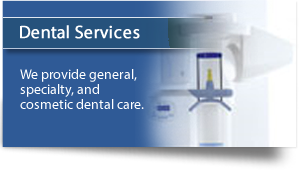Dental Abscess
A pocket of infected liquid (pus) that collects in a small area within the body is known as an abscess. In the mouth, abscesses can occur at the end of a tooth’s root or in the space between the teeth and gums. Infection may spread into the tissue and bones surrounding the tooth. If left untreated, it may also spread throughout the body.
Dental abscesses occur when bacteria enter certain areas (e.g., pulp of the tooth, deep gum pockets) of the mouth. Typically, decay or cracks in a tooth’s enamel allow bacteria access to the inner tooth (pulp). Gum disease can create deep spaces between the teeth where bacteria may thrive and develop into an abscess.
Dental abscesses usually cause significant pain. This pain may be sharp or throbbing and is usually persistent. Additional symptoms of a dental abscess can include fever, sensitivity to hot and cold, a visible boil in the gums near a tooth (which may rupture and leak fluid), or red, swollen gums. Patients who experience dental pain, or who have visible signs of an abscess, should consult their dentist immediately. Even if the pain goes away, any infected tissue needs to be removed and the cause of the abscess treated.
A dentist can usually diagnose an abscess based on examination of the patient’s mouth, which may include gently tapping a patient’s teeth (to identify the extent of damage to the pulp) and x-rays (to determine if bone loss has occurred). In addition, patients are usually asked to provide details about their symptoms.
Treating an abscess includes draining the abscess and treating the cause of the infection. These are often done at the same time. This allows the pus to drain from the tooth root while removing diseased tissue that led to the abscess. When the tooth damage is severe, tooth extraction may be required. Follow-up care may include antibiotics to eliminate the spread of infection, saltwater rinse to soothe inflamed tissue and follow-up x-rays to ensure proper bone and tissue re-growth in the area.
A dental abscess can be prevented by preventing its causes – primarily tooth decay. Thus, practicing daily brushing and flossing and committing to regular dental visits can help prevent dental problems that may lead to infection.

